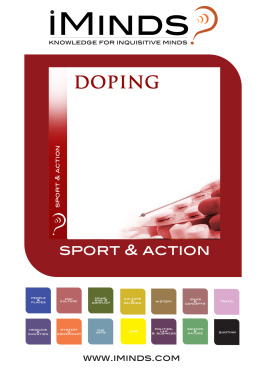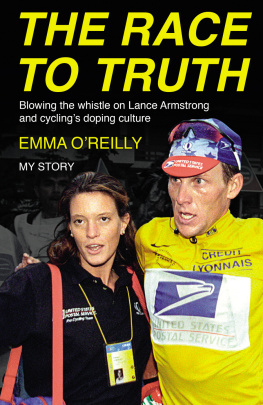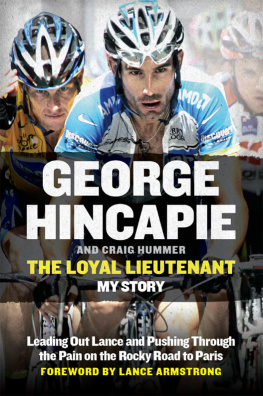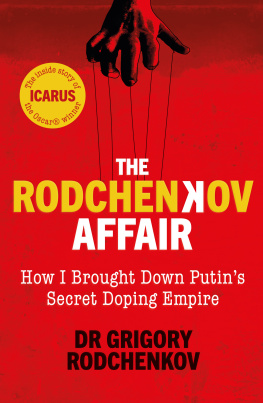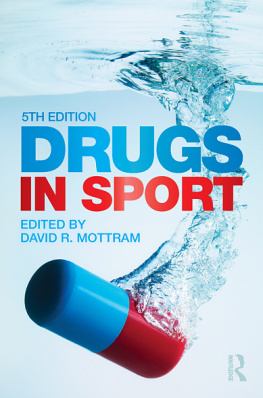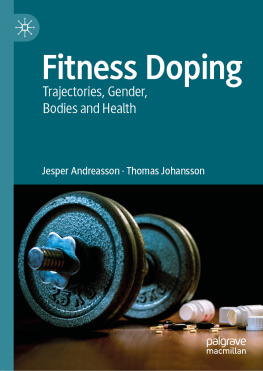
THE ANTI-DOPING CRISIS IN SPORT
The sense of crisis that pervades global sport suggests that the war on doping is still very far from being won. In this critical and provocative study of anti-doping regimes in global sport, Paul Dimeo and Verner Mller argue that the current system is at a critical historical juncture.
Reviewing the recent history of anti-doping, this book highlights serious problems in the approach developed and implemented by the World Anti-Doping Agency (WADA), including continued failure to accept responsibility for the ineffectiveness of the testing system, the growing number of dubious convictions, and damaging human-rights issues. Without a total rethink of how we deal with this critical issue in world sport, this book warns that we could be facing the collapse of anti-doping, both as a policy and as an ideology.
The Anti-Doping Crisis in Sport: Causes, Consequences, Solutions is important reading for all students and scholars of sport studies, as well as researchers, coaches, doctors and policymakers interested in the politics and ethics of drug use in sport. It examines the reasons for the crisis, the consequences of policy strategies, and it explores potential solutions.
Paul Dimeo is a Senior Lecturer in the Faculty of Health Sciences and Sport at Stirling University, UK.
Verner Mller is a Professor in the Department of Public Health at Aarhus University, Denmark.
THE ANTI-DOPING CRISIS IN SPORT
Causes, Consequences, Solutions
Paul Dimeo and Verner Mller
First published 2018
by Routledge
2 Park Square, Milton Park, Abingdon, Oxon OX14 4RN
and by Routledge
711 Third Avenue, New York, NY 10017
Routledge is an imprint of the Taylor & Francis Group, an informa business
2018 Paul Dimeo and Verner Mller
The right of Paul Dimeo and Verner Mller to be identified as authors of this work has been asserted by them in accordance with sections 77 and 78 of the Copyright, Designs and Patents Act 1988.
All rights reserved. No part of this book may be reprinted or reproduced or utilised in any form or by any electronic, mechanical, or other means, now known or hereafter invented, including photocopying and recording, or in any information storage or retrieval system, without permission in writing from the publishers.
Trademark notice: Product or corporate names may be trademarks or registered trademarks, and are used only for identification and explanation without intent to infringe.
British Library Cataloguing-in-Publication Data
A catalogue record for this book is available from the British Library
Library of Congress Cataloging-in-Publication Data
A catalog record for this book has been requested
ISBN: 978-1-138-68165-1 (hbk)
ISBN: 978-1-138-68167-5 (pbk)
ISBN: 978-1-315-54567-7 (ebk)
Typeset in Bembo
by HWA Text Data Management, London
CONTENTS
The sense of crisis that pervades global sport in the late 2010s has an undercurrent of pessimism that the war on doping might never be won. The policy to retest samples from suspected athletes who were not caught when they successfully competed in the Olympics has done little more than shown that the World Anti-Doping Agency (WADA) and the International Olympic Committee (IOC) have collectively failed to prevent doping through the 2000s. WADA investigations and media coverage of the highly organised Russian doping programme, which has been proven to operate in secrecy from 2010 to 2015, shows that the most determined cheats can beat the testers. This is precisely what the sports world learnt from the 2012 investigation into professional cycling led by the United States Anti-Doping Agency (USADA), which focused on Lance Armstrong but revealed an epidemic of doping problems. Similar lessons were learnt from the 2006 raid in Madrid on the clinic run by doping doctor Fuentes. Twenty years since the crisis precipitated by the 1998 Tour de France which helped usher in the creation of WADA, there is little sense that progress has been made to stop the most ambitious athletes and their support personnel from taking the logic of sport to a degree that transgresses the rules laid out in the World Anti-Doping Code (WADC). The anti-doping discourse presents doping as a crisis of sport and its perceived values.
However, the crisis is not limited to the act of using a banned substance to enhance performance. It has been exacerbated by the uniquely excessive ways in which doping has been interpreted, responded to, and policed. The anti-doping crisis is not just caused by consumers and suppliers, but by regulators and their implementers, and by moral arbitrators who over-emphasise the scandalous nature of doping, and under-emphasise or ignore the failings of, and harms caused by, anti-doping policies. Such criticisms of policy can be found in debates on the policing and regulation of illicit drugs where, in some countries and for some drugs, it has become accepted that a more tolerant approach to users can facilitate a more rational channelling of resources towards policing suppliers and high-risk drug cultures. Sports have yet to catch up with these developments, as the emphasis remains firmly upon clean sport or drug-free sport.
This absolutist approach means that anti-doping has unique characteristics. The expectation that all athletes be clean at all times means that policies are not just targeted at users or those at risk of using a banned substance. All athletes are subject to a testing system that invades their privacy in ways that would not be tolerated in any other walk of life. Moreover, the list of banned substances (the List of Prohibited Substances and Methods, hereafter the Prohibited List) is so lengthy and complex that athletes are not always fully informed of all the potential ways they could be sanctioned before they are tested. The list includes many drugs that are not performance-enhancing or a risk to health, such that the focus and purpose of anti-doping is sometimes lost within the need to follow rules and punish those who transgress them (deliberately or not). The implementation of policy is so tough that innocent athletes have been sanctioned, stigmatised and often given little opportunity for legal recourse. And yet, the moralising narratives continues unabated: cheats are seen to be undermining sport, any doping violation should be punished, all athletes should support WADA, and all athletes should be treated as potential cheats. The empowerment of anti-doping in response to over 30 years of scandals has paradoxically increased the drastic consequences for clean athletes and disproportionately punished unintended cases of doping, led to irrational stigmatisation of anyone caught doping, while at the same time consistently failed to crack down on doping.
This book is a critical assessment of policy. We begin with a selection of unintended consequences ().
Our intention is not to promote cultures of doping or a simplistic liberalisation agenda. We merely argue that the past and present of anti-doping point to the need for a different type of approach for the future. Of course, we should note that the future of sport might be revolutionised if the spectre of gene doping becomes a reality, though for the moment we have no evidence that it will. Should new undetectable gene-based technologies emerge then anti-doping will become obsolete. Since we have not yet reached that point, we shall explore the state of the system in its current form.





